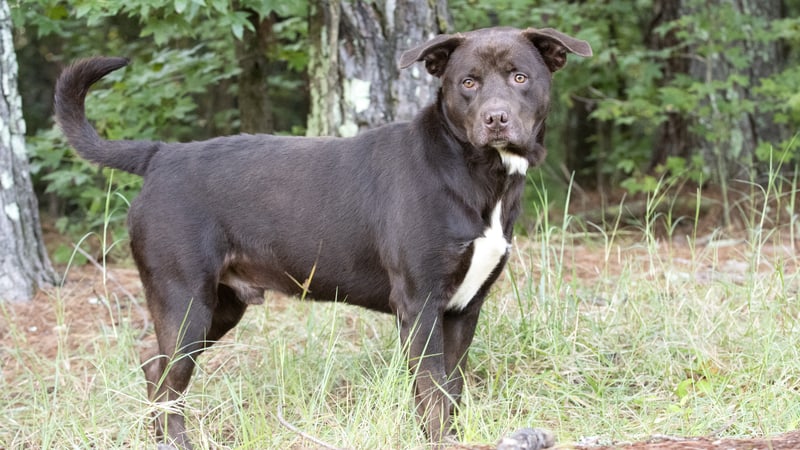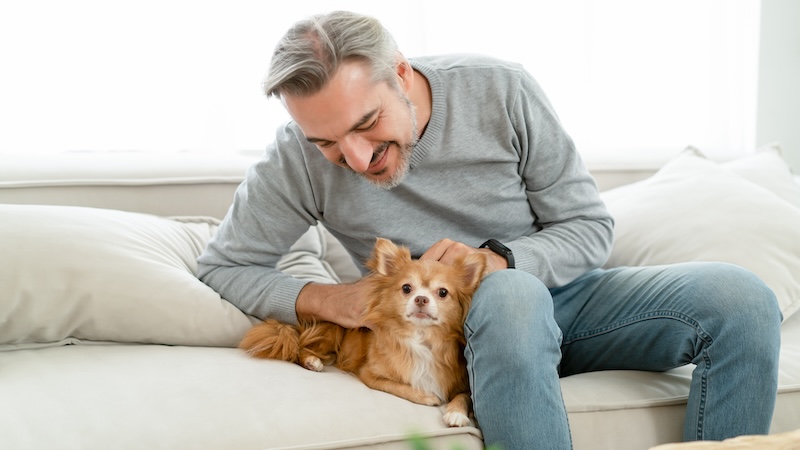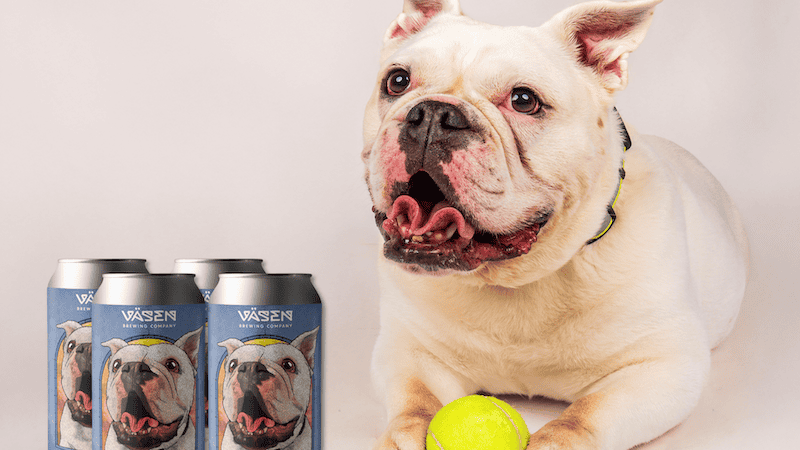Adopted Terrier Has Anxiety Issues
Plus a ‘snood’ for a dog?

A woman’s adopted dog has anxiety issues, making it difficult for him to adjust to a loving home after his feral life in a cemetery. See what pet advisor Cathy M. Rosenthal advises in this edition of “My Pet World.”
Dear Cathy,
I’ve had dogs my whole life and am perplexed by our current puppy, whom we got from a shelter four months ago. He is a three-year-old terrier mix found in a cemetery with his litter mates. He’s a sweet dog who goes from joy to anxiety, from jumping on us and giving kisses to being afraid of us and running away if we try to pet or approach him.
The biggest issue is getting him back inside after being in our fenced-in yard. When he’s done, he sits about 20 feet from the door and stares at us. He won’t come at all when called, even when offered treats. After 15 to 20 minutes, he may slowly approach the door and run in when the door is opened, but only sometimes. Often, we have to go out in the yard with the leash and bring him in, even in the rain. He has never been mistreated, spanked, or even yelled at here. He isn’t really treat-motivated. Any advice?
— P.D. in Illinois
Dear P.D.,
Your little terrier likely has never had any training and may distrust people from being homeless. That’s why he goes back and forth emotionally with you, why your adopted dog has anxiety issues. Don’t call him from the door until he is trained; this just reinforces his not coming when called. Instead, use play and training to build his trust.
Let’s start with training. You say he is not treat-motivated, but what’s really happening is that you have yet to find a treat he loves. When training in a home where there are few distractions, most people use low-value treats like hard biscuits, kibble, carrots, or green beans.
When training in the yard where there are more distractions, you can use store-bought training treats, or a piece of dog jerky or cheese cut into tiny pieces.
When progressing to training at a park or another busy setting where there are lots of distractions, use super high-value treats, like chicken in a can, a cut-up piece of hot dog or hamburger, or treats in a tube, like Kong’s Sweet Potato Tube Treat. (With tube treats, squeeze a little of the paste out and hold the tube near your dog’s mouth so he can lick it.) Your dog is not motivated by low-value treats, so look for a high-value treat he loves and start training with that one.
Teach your dog his name first. Say his name, and when he makes eye contact with you, use a reward word, like “awesome” or a clicker to mark the correct behavior. Then, give him a treat. Teach him “sit” and “come” in the same manner. Always use an enthusiastic voice when asking a dog to come since this excites the dog and makes him more likely to respond to the command.
If he is still not coming when called, shorten the distance between you or put him on a long lead so you can prompt him to come to you. Also, reward him for approaching you each and every time, even if you didn’t call him. He needs to be rewarded for coming to you, no matter the reason.
As his skills grow, use games to reinforce the recall command. Fetch is an excellent game for teaching recall. You can also play hide and seek with your dog. Hide somewhere in the house and then call him. When he “finds you,” give him a treat or enthusiastic praise.
Repetition is vital to learning the recall command. With training, he should be more trusting of you and less erratic with his affection.
This adopted dog has anxiety issues, the zoomies – and more!
Dear Cathy,
I just read about the noise-sensitive dog. I recently ordered a snood for my Springer Spaniel. It has been a long time since I have had a puppy, and they called it something else back then. The one I ordered claims to help with loud noises. This one is thicker than the ones I have had before. Of course, I plan to use it primarily to keep her ears clean.
— Sherlee Williams, Las Vegas, Nevada
Dear Sherlee,
For my readers, snoods are sort of “hat scarves” that fit over a dog’s head and are used to keep him warm or his ears from flopping all over the place. Similar to an Anxiety Wrap® or Thundershirt® for the body, snoods can be placed around a dog’s head to manage anxiety. Depending on the thickness, it certainly could muffle some sounds. Plus, dogs look super cute in them.
Everything is worth trying when it comes to helping dogs with noise sensitivity. Thank you for sharing this tip.
Cathy M. Rosenthal is a longtime animal advocate, author, columnist, and pet expert who has more than 25 years in the animal welfare field. She addresses reader questions as diverse as outdoor cat safety to bizarre dog behavior. Send your pet questions, stories, and tips to cathy@petpundit.com. Please include your name, city, and state. You can follow her @cathymrosenthal.
©2023 Tribune Content Agency, LLC
As an Amazon Associate, Boomer Magazine earns from qualifying purchases of linked products.


